Amazon-Orinoco-Southern Caribbean Mangroves
The ecoregion’s land area is provided in units of 1,000 hectares. The conservation target is the Global Safety Net (GSN1) area for the given ecoregion. The protection level indicates the percentage of the GSN goal that is currently protected on a scale of 0-10. N/A means data is not available at this time.
Bioregion: Amazon River Estuary (NT16), Guianan Forests & Savanna (NT21), Venezuelan Coast (NT23)
Realm: Southern America
Ecoregion Size (1000 ha):
4,116
Ecoregion ID:
611
Conservation Target:
71%
Protection Level:
8
States: Colombia, Brazil, French Guiana, Suriname, Guyana, Venezuela, Trinidad and Tobago
The sapphire-bellied hummingbird is a brilliantly colored and critically endangered species about which very little is known, except that they are very few in number and are restricted to the mangrove swamps of this ecoregion. These mangrove specialists help pollinate many of the plant species that eke out a living in these intertidal habitats. In the scarcity of fresh water, hummingbirds will drink water droplets from the leaves of mangroves or from bromeliads hanging in their branches. Most species in this ecoregion need to adapt to both fresh and salt water, and to terrestrial and arboreal life—as tides and floods create a constantly changing environment.
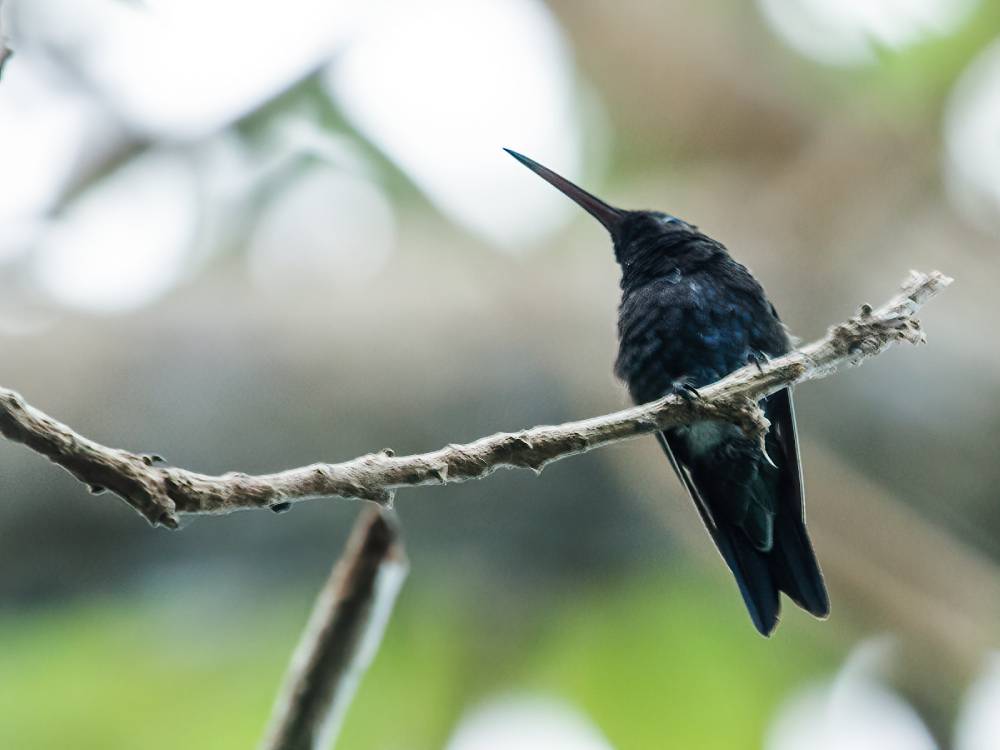
The flagship species of the Amazon-Orinoco-Southern Caribbean Mangroves ecoregion is the sapphire-bellied hummingbird. Image credit: Creative Commons, NIck Athanas
The Amazon-Orinoco-Southern Caribbean Mangrove ecoregion is comprised of seven subecoregions.
- The Maranhão Mangrove subecoregion is divisible into eastern and western parts, to either side of the Bahía de São Marcos, where the island of São Luis is located. The mean annual temperature is 26°C and average rainfall ranges from 2,500– 4,000 mm respectively.
- The Para Mangroves hold the mangrove patches around the mouth of the Amazon, Baía de Marajó. The annual temperature is 24–32°C and rainfall 2,500–4,000mm.
- The Ampa coast mangroves are north of the mouth of the Amazon River area, and are fragmented by natural processes. The mean annual temperature is 25–26°C and rainfall is 4,000 mm.
- The Guianan Mangroves lie along the north coast of South America running through southeastern Venezuela, Guyana, Suriname, and French Guiana between the Oyapok and Orinoco River Deltas. The great length of coastline covered leads to a variation in annual rainfall 960–3,054 mm and monthly mean temperature 25.4–27.2°C.
- The Coastal Venezuelan Mangroves is almost 1/4 of the Venezuelan coastline in size. The main mangrove stand is on the Atlantic Ocean coast, between the Gulf of Paria and the Orinoco Delta, where annual rainfall exceeds 2,000 mm.
- The Magdalena-Santa Marta Mangroves are in northern Colombia, encompassing the Gulfo de Urabá extending east past the Sierra Nevada de Santa Marta. The temperature is 27°C with a seasonal rainfall of 400-760 mm.
- The Trinidad Mangroves flourish in estuarine conditions with a 34–36% salinity gradient conducive for mangrove growth. The mean annual rainfall is 1,556 mm. Characteristic vegetation for the whole ecoregion are Rhizophora racemose, Avicennia schaueriana, green buttonwood, and red, white, and black mangroves. Found exclusively in the Magdalena-Santa Marta Mangroves ecoregion is the sapphire-bellied hummingbird. The Coastal Venezuelan Mangroves have comprehensive documentation of avifauna presence including the endemic and endangered plain-flanked rail. In general mangrove habitats provide refuge for a wide variety of migratory birds and mammals in need of resources.
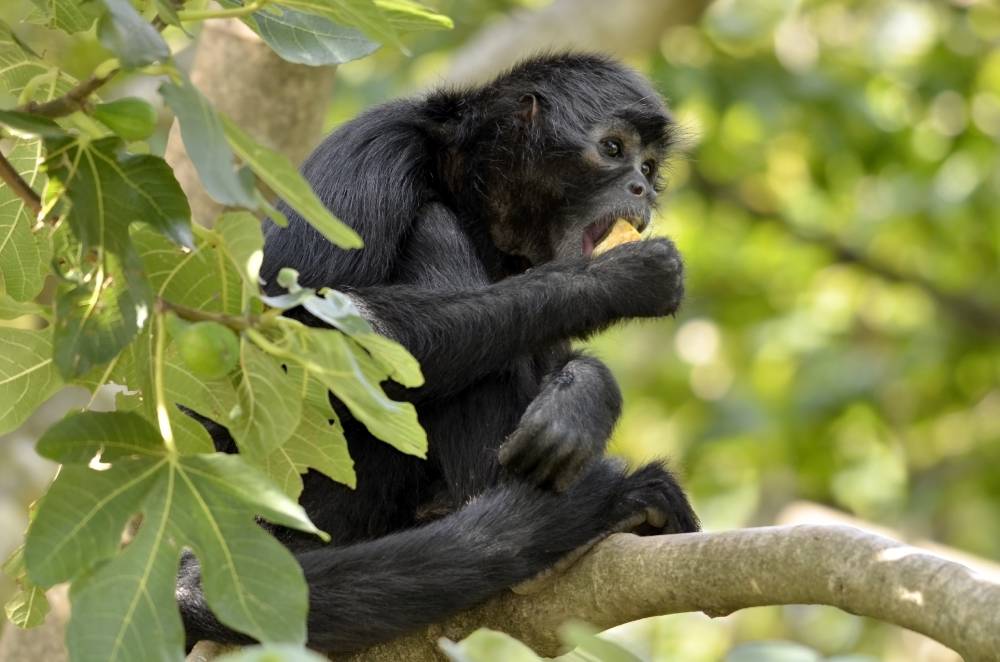
Black-headed spider monkey sitting on a tree branch.
Mammals include black-headed spider monkey, white-cheeked spider monkey, black bearded saki, cotton-top tamarin, and giant otter. Marine species common throughout this ecoregion include the tucuxi, manatee, and sea turtle. Both green and leatherback sea turtles breed in the area.
Maranhão Mangroves protected areas include the Bacanga State Park on São Luis Island, the Lencóis Maranhenses National Park, three environmental protection areas, an extractive reserve and a state park.
%2C%20sometimes%20also%20referred%20to%20as%20Out%20of%20Gamut%20Ibis%2C%20is%20a%20species%20of%20ibis%20that%20inhabits%20tropical%20South%20America%20and%20also%20Trinidad%20and%20Tobago.%20dreamstime.jpeg)
Scarlet ibis near the water.
The Para Mangroves overlap with 5 environmental protection areas. The Amapa Mangroves protected areas include the Cabo Orange National Park, an environmental protection area, two biological reserves, an extractive reserve, an ecological station, and a national forest. Combined these three mangroves make up more than half of the total Brazilian mangrove area, largely intact because of low population density and poor accessibility. The Guianan Mangroves have many protected areas, resulting in large intact blocks of mangrove forest. In Coastal Venezuelan Mangroves, there is an extensive system of protected areas, covering nearly 1/3 of its territory. The Magdalena-Santa Marta Mangroves contain two National Parks. Trinidad mangroves are included in a protected area system, but with no active management or explicit mangrove protection policies.
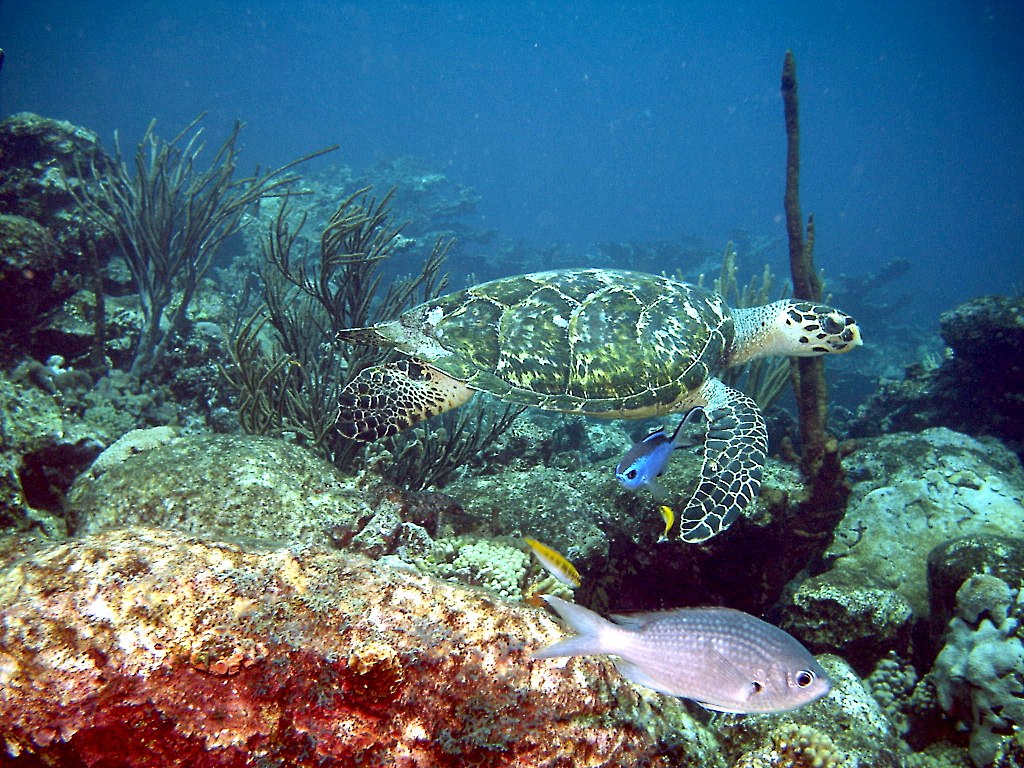
Hawksbill sea turtle. Image Credit: Creative Commons, Pedrosanch
Overexploitation of this ecoregion’s mangrove resources is a major threat. Other concerns include subsistence agriculture, livestock grazing, tourism, timber and mineral extraction, commercial development, and urban expansion into mangrove areas. A direct impact on mangroves is the harvesting of crabs, a keystone species in mangrove ecosystems, but also a vital source of income to local artisanal fishermen.
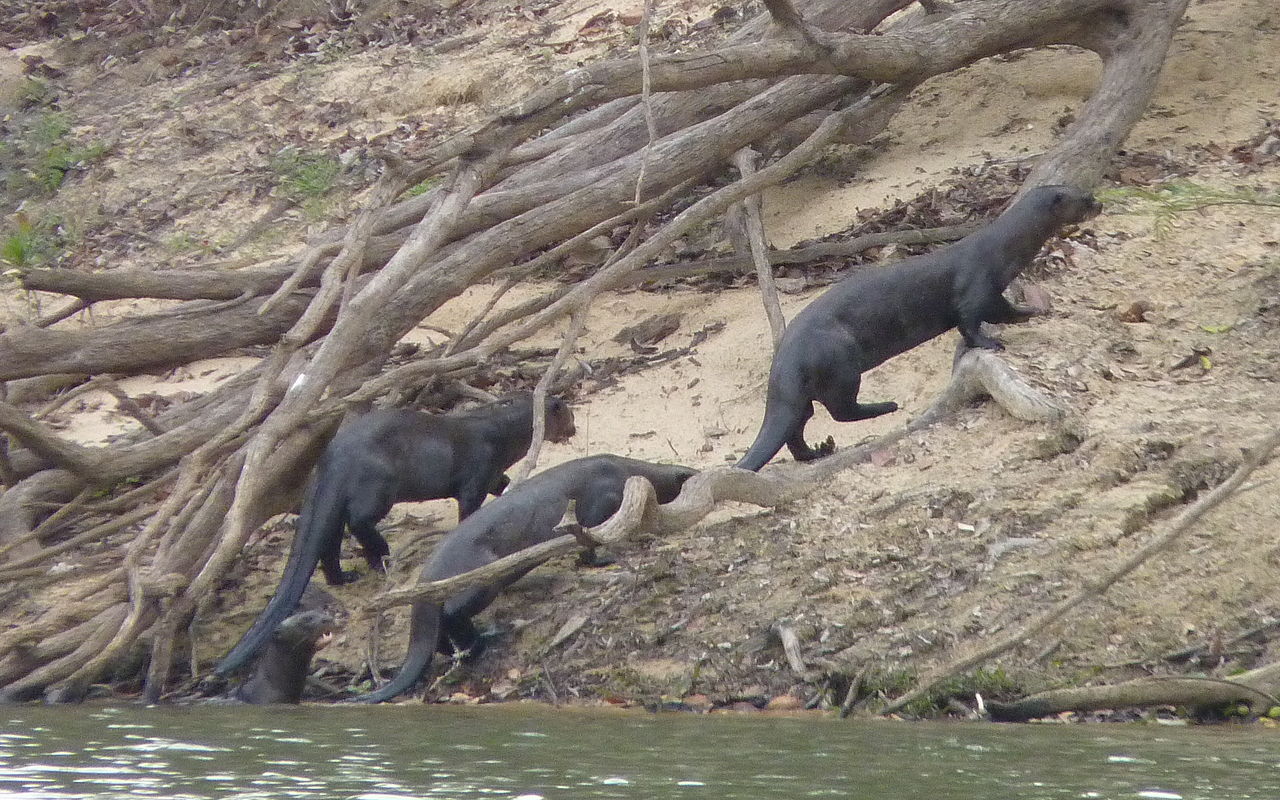
Four giant otters emerging from the water. Image credit: Creative Commons, Wilfredor
The priority conservation actions for the next decade will be to: 1) ensure sustainable crab harvest; 2) restrict resource exploitation; and 3) educate locals on the economic benefits of mangrove biodiversity.
Citations
1. Tognetti, S. Burdette, C. 2018. Northeastern Brazil https://www.worldwildlife.org/ecoregions/nt1419 Accessed August 21, 2018
2. Tognetti, S. Burdette, C. 2018. Northeastern Brazil https://www.worldwildlife.org/ecoregions/nt1427 Accessed August 21, 2018
3. Tognetti, S. Burdette, C. 2018. Northern South America: Northern Brazil https://www.worldwildlife.org/ecoregions/nt1402 Accessed August 21, 2018
4. Tognetti, S. Burdette, C. Schipper, J. 2018. Eastern South America: Coastal French Guiana, Suriname, Guyana, and southeastern Venezuela https://www.worldwildlife.org/ecoregions/nt1411 Accessed August 21, 2018
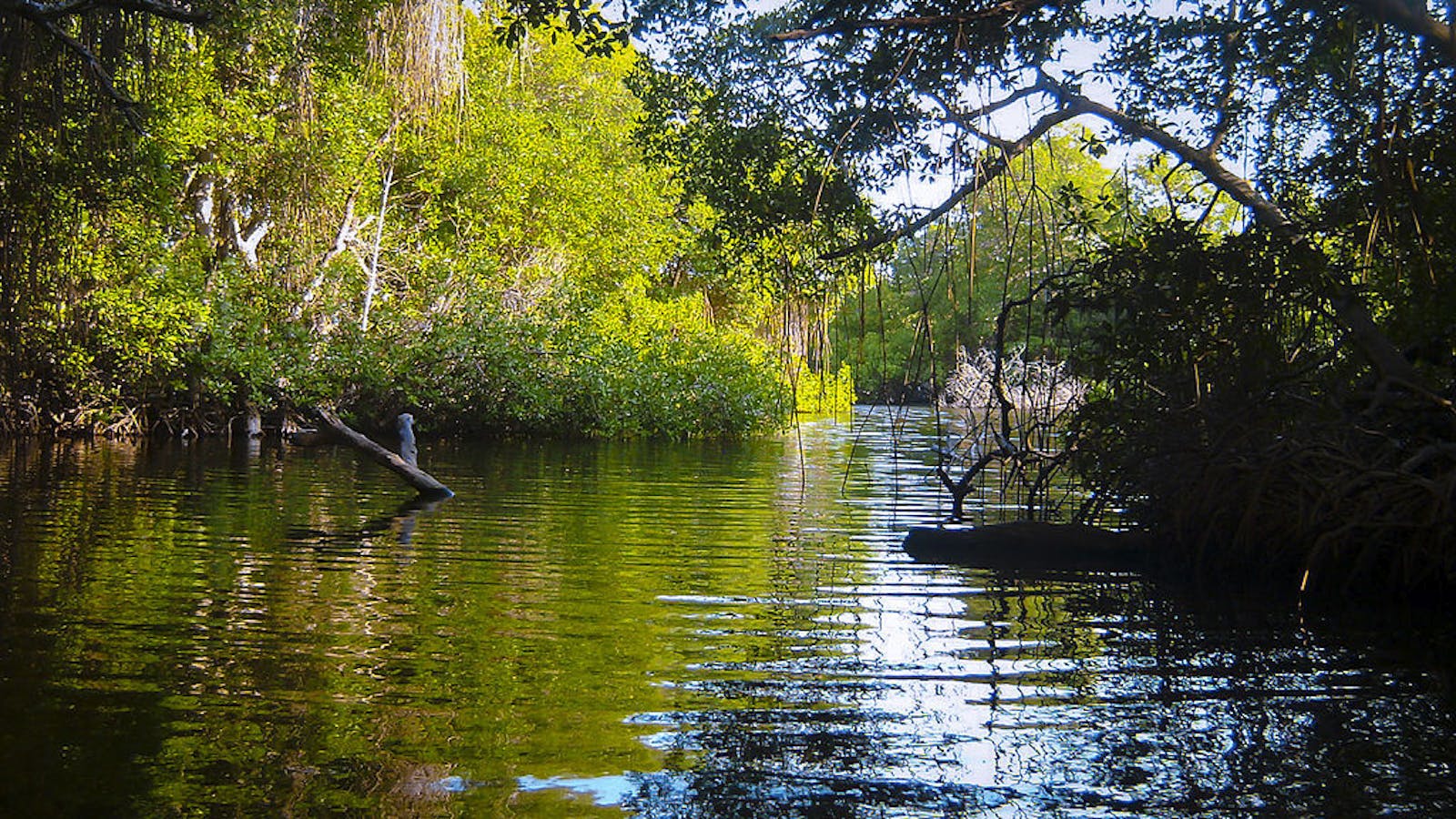
%20creative%20commons%20%20Micael%20106.jpeg?auto=compress%2Cformat&w=1600)



